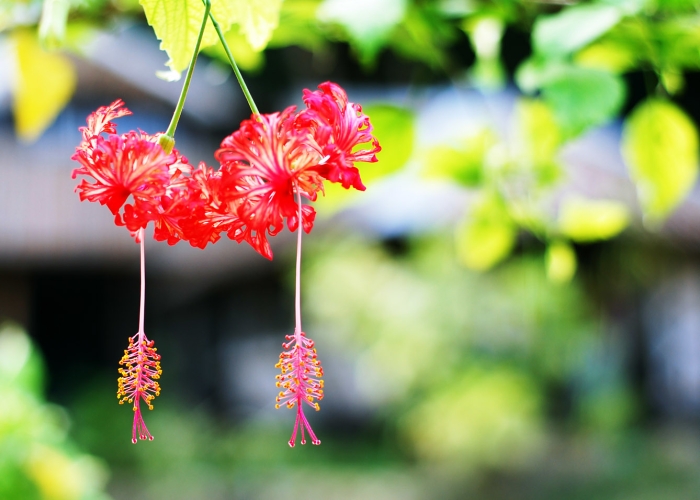Fringed Rosemallow
(Hibiscus schizopetalus)
Fringed Rosemallow (Hibiscus schizopetalus)
/
/

John Valentine II
CC BY-SA 2.0
Image By:
John Valentine II
Recorded By:
Copyright:
CC BY-SA 2.0
Copyright Notice:
Photo by: John Valentine II | License Type: CC BY-SA 2.0 | License URL: https://creativecommons.org/licenses/by/2.0/ | Uploader: John Valentine II | Publisher: Flickr |














































Estimated Native Range
Summary
Hibiscus schizopetalus, commonly known as Fringed Rosemallow, is an evergreen perennial subshrub native to tropical East Africa, specifically found in coastal forests and along riverine environments. It can grow up to 3 meters (9.8 ft) tall and is characterized by its deeply lobed, frilly petals that are typically red or pink, making the flowers highly ornamental and distinctive. The flowering season extends throughout the year in its native habitat, with peak blooming often occurring in warmer months. The plant’s unique flower form and coloration make it a standout in any garden setting.
Fringed Rosemallow is valued for its exotic appearance and is often used in tropical and subtropical gardens as a specimen or accent plant. It is also suitable for container gardening, which allows for movement to protect the plant from temperatures below 10 °C (50 °F). The plant has been recognized with the Royal Horticultural Society’s Award of Garden Merit, highlighting its desirability for cultivation. It thrives in full sun but can tolerate light shade, requiring medium water and well-drained soils with a preference for alkaline or neutral pH levels. While it is relatively easy to maintain, it is susceptible to common pests such as aphids and spider mites, and may suffer from root rot if overwatered or planted in poorly drained soils.CC BY-SA 4.0
Fringed Rosemallow is valued for its exotic appearance and is often used in tropical and subtropical gardens as a specimen or accent plant. It is also suitable for container gardening, which allows for movement to protect the plant from temperatures below 10 °C (50 °F). The plant has been recognized with the Royal Horticultural Society’s Award of Garden Merit, highlighting its desirability for cultivation. It thrives in full sun but can tolerate light shade, requiring medium water and well-drained soils with a preference for alkaline or neutral pH levels. While it is relatively easy to maintain, it is susceptible to common pests such as aphids and spider mites, and may suffer from root rot if overwatered or planted in poorly drained soils.CC BY-SA 4.0
Plant Description
- Plant Type: Shrub
- Height: 6-8 feet
- Width: 5-6 feet
- Growth Rate: Moderate
- Flower Color: Pink
- Flowering Season: Spring, Summer
- Leaf Retention: Evergreen
Growth Requirements
- Sun: Full Sun, Part Shade
- Water: Medium
- Drainage: Medium
Common Uses
Bee Garden, Bird Garden, Butterfly Garden, Deer Resistant, Hummingbird Garden, Showy Flowers
Natural Habitat
Native to tropical East African coastal forests and riverine environments
Other Names
Common Names: Japanese Lantern, Coral Hibiscus, Spider Hibiscus
Scientific Names: , Hibiscus schizopetalus, Hibiscus rosa-sinensis var. schizopetalus, Hibiscus rosa-sinensis f. schizopetalus, Hibiscus sinensis var. schizopetalus,
GBIF Accepted Name: Hibiscus schizopetalus (Dyer) Hook.fil.